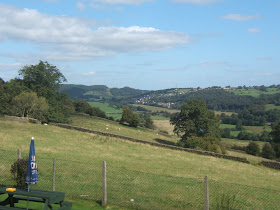
Did you know that the Romans were the first to build pubs in this country? They were small shops serving food and wine. Customers would eat and drink, seated on stools around a communal table.
This establishment does not date back quite that far, but the Dolphin Inn does hold the title of Derby's oldest pub. Situated on Queen Street just above Derby Cathedral, the original part of the building was constructed in around 1530 with an extension being added in the 18th Century. The extension is easy to spot, being the left hand side of the building as photographed, and was originally a doctor's house.
The choice of name is interesting. The dolphin was a well known Christian symbol in medieval days, a fact which supports the dating of the pub. After the Romans, there is little evidence of the pub tradition until the Middle Ages, when inns were run by monks offering food and shelter to travellers.
Being so old, the Dolphin has a few interesting stories to tell. In 1738, highwayman Dick Turpin is said to have been a customer, while it is almost certain the Bonnie Prince Charlie's men would have drunk here on their march towards London (little knowing that they had almost reached the most southerly point of their journey).
Of course, there are also the associated ghost stories. A Blue Lady is said to walk through the lath and plaster walls and a poltergeist is associated with the extension which, being a former doctor's house, would have been the scene of many post execution dissections. YUK :(





















































